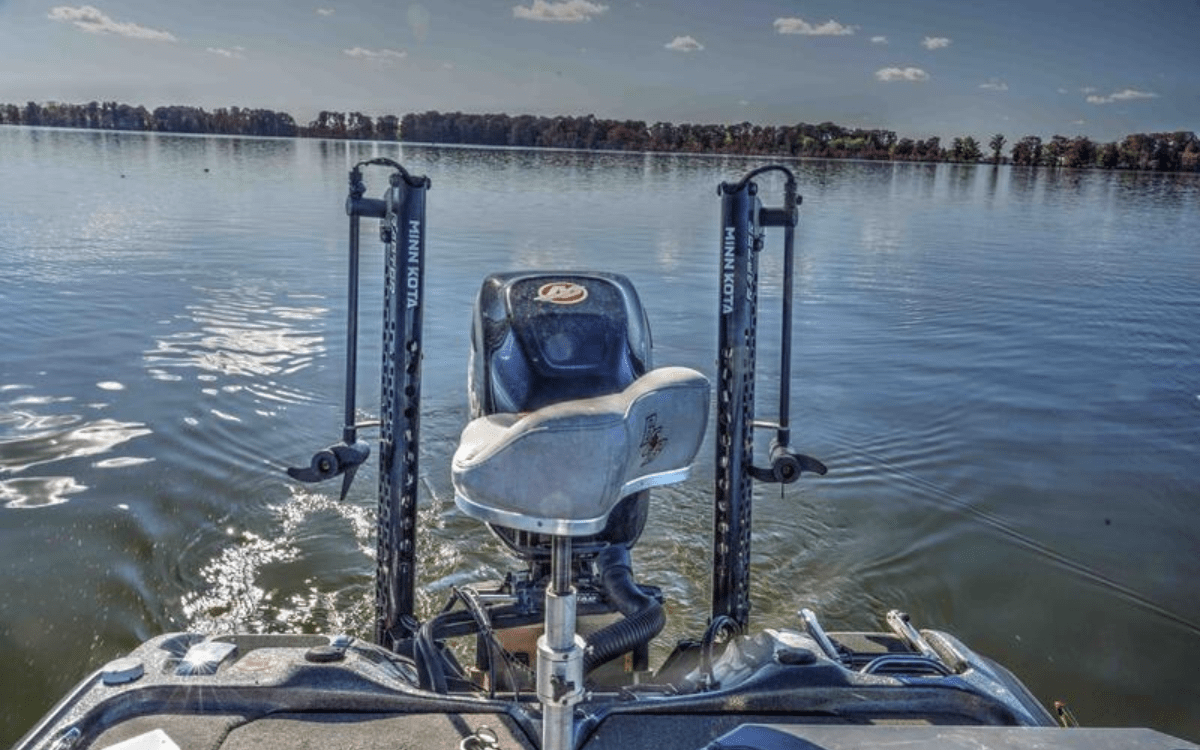Forward Facing Sonar Bans and Rule Changes in Pro Bass Fishing
The ink barely dried on Chris Johnston’s Bassmaster Elite Angler of the Year check and already the off-season is off to a contentious start. As the season concluded last month, the days following the Elite Series event on the St. Lawrence River were full of drama surrounding professional anglers’ opinions on forward facing sonar. Clark Wendlandt, one of the older anglers on tour, took to social media to condemn FFS, while Ben Milliken, who just finished his rookie season, took his pro FFS opinions to the Baitman Live podcast. In both instances, the comment sections ran rampant with backlash and emotional opinions from other pro anglers.
To be frank, it was all a bit ugly to watch.
But if you take a step back, it’s easy to see that the professional tours were running out of time to address FFS technology and make their stances clear on an issue that’s been dividing professional and amateur anglers alike for years. So it wasn’t much of a surprise when, on Wednesday, BASS finally announced new rules about the technology anglers can — and can’t use in competition.
BASS stopped short of banning FFS from competition, instead opting to limit the number of transducers and limiting the amount of screen allowed on boats. This compromise has managed to anger FFS proponents as well as the anti-FSS crowd, who argues that these restrictions aren’t strong enough.
These rule changes were announced on the heels of the National Professional Fishing League’s statement Monday that it would be banning FSS outright from practice and competition. The tour is much smaller than BASS and less well known, but it’s the first pro tournament series to institute an all-out ban on FSS.
Both these rule changes will go into effect for the 2025 season. Here’s what all this means.
Bassmaster’s FFS Rule Changes
To reach its decision, BASS reviewed the findings of its own technology committee and tournament results, as well as the opinions of conservation partners, industry leaders, and every Elite Series pro. Here’s what they found.
One Transducer Rule
BASS will be limiting the number of live sonar transducers to one, and that transducer must be mounted to the trolling motor at the bow of the boat. Anglers can no longer use multiple transducers to surround their boat (previously there was no limit) and it also outlaws products like the RailBlaza Live Pole 30 Fish-Finder Mount, which allows anglers to control their transducer separate from the trolling motor.
Maximum of 55 Inches of Screen
BASS will also limit competitors to a total of 55 inches of screen, including bow and dash head units. The organization cited safety concerns as the main reason for this decision. Previously, anglers were able to run as many front graphs as they wanted, a trend that resulted in multiple massive screens on the bow of the boat. In some cases, anglers were running so many large screens that it was nearly impossible to see directly in front of the boat. (It should go without saying, but not being able to see over your bow is a recipe for disaster.)
One Trolling Motor
BASS also added a rule that anglers may only have one electric motor mounted to their boats. While using more than one trolling motor is uncommon, some pros have been finding alternative ways to fish by mounting trolling motors to their shallow water anchors, a setup known as “crappie brakes.” These ‘brakes’ allow you to more easily control the back end of your boat, which can be helpful when trying to position your boat to make a cast or if you see a fish on FFS and need to stop the boat in a hurry to keep the fish inside your transducer beam.

New Schedule
Finally, BASS announced it will diversify its Elite Series schedule by adding new lakes to its lineup and eliminating old standbys. The organization said, “while live sonar technology will remain a consistent tool used at the very highest level of competitive bass fishing, experience and a deep-seeded understanding of fish behavior, movement and patterns will also be needed for success moving forward on the fisheries scheduled.” This change appears to address criticism that BASS was purposely selecting lakes where FFS tactics would reign supreme. Regardless of the FFS controversy, I’m excited to watch new anglers break down new lakes instead of reviewing the same 15 to 20 lakes we’ve grown accustomed to seeing the last five years.
Rule Changes Have Prompted Even More Outrage Among Fans
Fans have been clamoring for BASS to make a call on FFS for years. Now that the organization actually has, however, many fans are still pissed off.
FFS proponents say BASS’ decision was brash. It’s unnecessary to limit technology that every angler had the opportunity to learn and leverage. It doesn’t matter how advanced FFS gets as long as all competitors have access to it.
Meanwhile, anti-FFS fans also seem unsatisfied. The decision doesn’t go far enough to eliminate technology that has changed the entire experience of pro bass fishing.

I can appreciate both arguments. Personally, I’m pleased with BASS’s decision. As a fan — but also a competitive angler — watching pros catch fish with all that unlimited tech was no longer fun. Part of that is because I don’t like watching someone watch a screen all day, but also because it didn’t feel like a level playing field to me: I could never afford to rig up my bass boat like that. Six graphs up front, four graphs on the console, multiple transducers hanging from every angle, and tack on crappie brakes? We were witnessing tens of thousands of dollars in electronics to catch bass. Deep down I know that kind of gear isn’t necessary, but it was beginning to feel like the only way to remain competitive. Now, though, the prospect of pared-back tech in the 2025 Elite Series has me excited to tune in again.
Meanwhile, the National Professional Fishing League’s decision to completely ban “live forward-facing sonar” was more decisive. The NPFL even took a preemptive stab at the BASS ruling by stating, “Limiting transducers or screens or only allowing the technology on certain days or hours are half measures that may quiet some opponents of the technology, but they are unlikely to reduce its impact.”
To me, the NPFL’s decision was more of a publicity stunt than anything, and this FFS ban couldn’t have come at a better time for the organization. Although I’ve written before about how pro tours would never ban FFS, I wasn’t counting the NPFL among them. This essentially unknown tour decided to make a name for itself by banning FFS in hopes of pulling a new crowd to watch their events. And it’s true that when this news broke, pro anglers and fans alike took to social media to spread the word. “FFS has been banned!”
Now, to be fair to NPFL, the league has been able to keep lights on for several seasons now. But most of us pro bass fishing fans don’t really consider NPFL on the same level as the Bass Pro Tour and the Elite Series. While anglers from the top two tours do sometimes drop in to fish the NPFL events, most of the big players aren’t concerned with this lower level of competition.

Final Thoughts on FFS Restrictions
While the anti-FFS crowd has made its stance perfectly clear in comment sections, I don’t expect those fans to cut ties with their favorite pro tours and flock to NPFL instead. Still, I’m intrigued enough to keep tabs on the tour next year, and I’m also curious to see the impact the FSS ban has on the tour and its anglers in the long run.
As anglers and fans await the final word on FFS usage and technology limitations from the final holdout — the Major League Fishing governing body — it’s safe to say that it’s been quite the entertaining off-season so far. MLF has not signaled if or when it will change its FSS regulations, but it will be interesting to see if these recent announcements prompt them to make a call. I’m interested to see how these rule changes impact viewership among fishing fans. But for now, we’ll wait and see if these changes can shrink the indisputable divide that FFS has caused within our ranks.
The post Forward Facing Sonar Bans and Rule Changes in Pro Bass Fishing appeared first on Outdoor Life.
Source: https://www.outdoorlife.com/opinion/forward-facing-sonar-ban-professional-bass-fishing/




